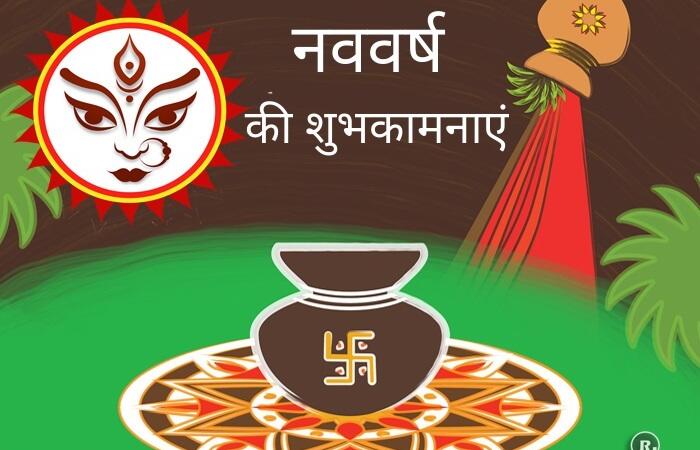Indian Family system

The family is one of the main socializing institutions of society. Since ancient times, the family has been the most important child care institute in India as children are expected to grow under the glory of a family where a satisfactory rearing of a child is ensured.
According to Pope–“the family is more sacred than the State.” It was pointed out by Will and Ariel Durantthat the family is the nucleus of civilization. The universal declaration of human rights prescribed the family as the natural and fundamental unit of society. The family is virtually a social organization or a unit of men and women out of the relationship.
The importance of family lies in bringing up the child to a full man in the family atmosphere. It has been a time-honored belief in our culture that the child is a gift of God that must be nurtured with care and affection within the family and society as the future dawns. As per Confucius-the strength of a Nation is derived from the integrity of its homes. It is the famous saying that a comfortable home is a great source of happiness. It ranks immediately after health and good conscience as aptly said by Byron. Without a loving heart, there is no meaning for home. The purpose of this chapter is to describe the theoretical framework of this research by defining family and giving insight into the Indian family system.
Family Unity
In India, the family is the most important institution that has survived through the ages. India, like most other less industrialized, traditional, eastern societies is a collectivist society that emphasizes family integrity, family loyalty, and family unity. C. Hui and H. Triandis defined collectivism, which is the opposite of individualism as, “a sense of harmony, interdependence, and concern for others”. More specifically, collectivism is reflected in a greater readiness to cooperate with family members and extended kin on decisions affecting most aspects of life, including career choice, mate selection, marriage, and its continuity.
The Indian family has been a dominant institution in the life of the individual and in the life of the community. For the Hindu family, extended family and kinship ties are of utmost importance. In India, families adhere to a patriarchal ideology, follow the patrilineal rule of descent, are patrilocal, have familistic value orientations, and endorse traditional gender role preferences. The Indian family is considered strong, stable, close, resilient, and enduring.
Joint Family
Historically, the traditional, ideal, and desired family in India is the joint family. A joint family includes kinsmen, and generally includes three to four living generations, including uncles, aunts, nieces, nephews, and grandparents living together in the same household. It is a group composed of a number of family units living in separate rooms of the same house. These members eat the food cooked at one hearth, share a common income, common property, are related to one another through kinship ties, and worship the same idols.
The family supports the old; takes care of widows, never-married adults, and the disabled; assists during periods of unemployment; and provides security and a sense of support and togetherness. The joint family has always been the preferred family type in the Indian culture, and most Indians at some point in their lives have participated in joint family living. The beauty of the Indian culture lies in its age-long prevailing tradition of the joint family system. It’s a system under which even extended members of a family like one’s parents, children, the children’s spouses and their offspring, etc. live together. The elder-most, usually the male member is the head in the joint Indian family system who makes all important decisions and rules, whereas other family members abide by it dutifully with full respect.
A major factor that keeps all members, big and small, united in love and peace in a joint family system in India is the importance attached to the protocol. This feature is very unique to Indian families and very special. Manners, like respecting elders, touching their feet as a sign of respect, speaking in a dignified manner, taking elders’ advice prior to taking important decisions, etc., is something that Indian parents take care to inculcate in their kids from the very beginning.
The head of the family responds by caring for and treating each member of the family the same way. The intention behind the formation of any social unit will fail to serve its purpose if discipline is lacking and the same applies to the joint family system as well. Due to this reason, discipline is another factor given utmost importance in the joint family system in India. As a rule, it’s the say of the family head that prevails upon others. In case of any disagreement, the matter is diligently sorted out by taking suggestions from other adult members. One usually also has to follow fixed timings for returning home, eating, etc.
The reason why Indians are proving to emerge as a prosperous lot globally, many types of research claim, is because of the significance they attach to the joint family system. All working cohesively to solve a problem faced by anyone or more members of the joint family is what works magic in keeping one tension-free, happy, and contented even in today’s highly competitive environment. An Indian maybe a top corporate honcho or a great sportsperson or a movie actor and so on in a particular professional field, but all these accomplishments relegate to the backseat when at home.
With the advent of urbanization and modernization, younger generations are turning away from the joint family form. Some scholars specify that the modified extended family has replaced the traditional joint family, in that it does not demand geographical proximity or occupational involvement and does not have a hierarchal authority structure. This new family form encourages frequent visits; financial assistance; aid and support in childcare and household chores; and involvement and participation in life-cycle events such as births, marriages, deaths, and festival celebrations. The familial and kinship bonds are thus maintained and sustained.
Even in the more modern and nuclear families in contemporary India, many functional extensions of the traditional joint family have been retained, and the nuclear family is strongly embedded in the extended kinship matrix. In spite of the numerous changes and adaptations to a pseudo-Western culture and a move toward the nuclear family among the middle and upper classes, the modified extended family is preferred and continues to prevail in modern India.
India is an extremely pronatalist society, and the desire to have a male child is greatly stressed and is considered by some to be a man’s highest duty, a religious necessity, and a source of emotional and familial gratification. Because male children are desired more than female children, they are treated with more respect and given special privileges. Male children are raised to be assertive, less tolerant, independent, self-reliant, demanding, and domineering.
Females, in contrast, are socialized from an early age to be self-sacrificing, docile, accommodating, nurturing, altruistic, adaptive, tolerant, and religious, and to value family above all. In rural areas, low-income women have always worked outside the home. In urban areas, there has been a substantial increase in the number of middle-and upper-class women working to supplement their husbands’ incomes. In a traditional Indian family, the wife is typically dependent, submissive, compliant, demure, nonassertive, and goes out of her way to please her husband. Women are entrusted with the responsibility of looking after the home and caring for the children and the elderly parents and relatives.
Child-rearing practices in India tend to be permissive, and children are not encouraged to be independent and self-sufficient. The family is expected to provide an environment to maximize the development of a child’s personality and, within the context of the Hindu beliefs and philosophy, positively influence the child’s attitudes and behaviors.
Adolescence and young adulthood are particularly stressful and traumatic stages in the lives of Indian youths. In one way, they desire emancipation and liberation from family but residing in the matrix of the extended family makes it difficult for them to assert themselves and exhibit any independence in thought, action, or behavior. Social changes are gradually occurring but arranged marriages are still the norm, and dating generally is not allowed.
Furthermore, sex and sexuality issues are not openly discussed, sex education is not readily available, interrelationships with the opposite sex are discouraged, and premarital sex is frowned upon. In the traditional Indian family communication between parents and children tends to be one-sided. Children are expected to listen, respect, and obey their parents. Generally, adolescents do not share their personal concerns with their parents because they believe their parents will not listen and will not understand their problem.
Suggested Read: Extinct Joint Family System






